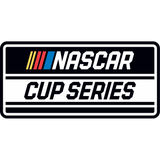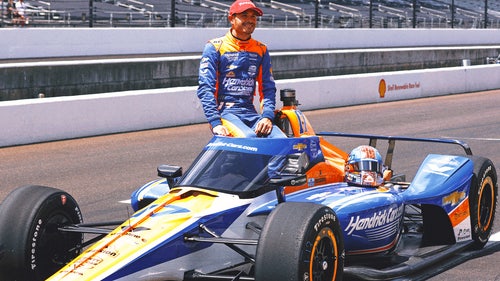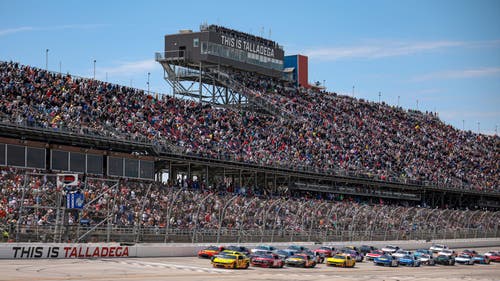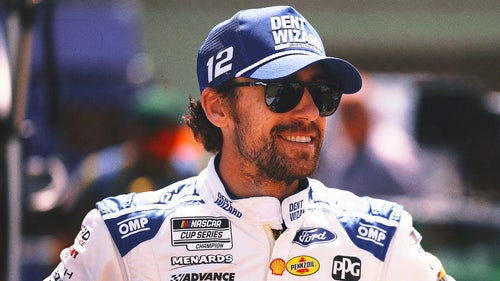
NASCAR drives toward innovation
The era of NASCAR’s benevolent dictatorship is slowly fading.
After six decades, the sport realizes the importance of venturing outside its inner circle in search of fresh concepts from the brightest minds inside the garage and beyond. While the sanctioning body has incorporated focus groups on the marketing side of the equation, change – in the form of innovation and technology – is also coming to NASCAR.
Spearheading the initiative through NASCAR’S Research & Development Center is Steve O’Donnell, senior vice president of operations since January 2010 and a 16-year veteran of the sport.
“The key thing for us, up front, is to look at this as a normal course of business for NASCAR in that we’ve done a lot of things to evolve the business," O'Donnell said. "So it’s already started. I’ve spent some time up at R&D, and the folks up there are already heavily engaged in a number of new projects. So it’s already ongoing from our perspective. It’s just something that we look to do to advance NASCAR in the future.”
O’Donnell will focus on “four key areas” that won’t necessarily be limited to competition but “involve all aspects of the business.” Initially, NASCAR will look to improve the quality of racing on intermediate tracks, incorporating more economical and fuel-efficient car models into its farm systems, a greater integration of technology throughout the sport and new track-drying technology – which NASCAR chairman Brian France revealed briefly last Saturday.
“We still have the jet dryers out there, and it takes about 2 1/2 hours to dry a track,” O’Donnell said. “For us, that’s a big challenge not only for the folks in grandstands, but the viewers on television. If you could change that to an hour-and-a-half, an hour or 20 minutes, that’s a game changer for the sport. We’re going to take a hard look at that, study it; we’re already doing that. But look at new technologies that would allow us to really change the sport in order to race much more quickly in the circumstance of rain.
“Evolving our actual racing particularly on intermediate tracks – how we can constantly improve on those tracks? We’re looking at our ‘B’ and ‘C’ class cars -- huge interest from the manufacturers going forward in terms of being in that space and the relevancy particularly to younger buyers. We obviously want to be a part of that. We think the manufacturers obviously buy into NASCAR. We’ve seen that with the 2013 car bodies for the Cup cars. So how can we help them and also help ourselves and our teams by being in that space with the smaller-class cars?
“Another focus is technology, integration really throughout everything we do in competition, be it officiating, dashboards on the cars, the technology that we put in the cars. Who knows what’s out there? Things change almost weekly in the technology space, so we want to be relevant there and bring in and work with current partners and new partners to really showcase NASCAR as the place to be.”
Having studied abroad for six years in Egypt and traveled throughout the world, O’Donnell said his experiences helps break cultural barriers for him as he explores new locales and expands existing series outside of the United States. O’Donnell, who oversees the touring series in Mexico and Canada, has watched those programs expand as well as NASCAR-style racing taking off in Europe.
“The initiative in Europe with stock cars has been great,” O’Donnell said. “It’s given us a footprint with our style of racing, which has been hugely popular. We’ve seen their competitors come over and compete in the U.S. and vice versa. And we’re sending folks over there.
“It’s been a building process where we want to do it smartly. You’ve seen in the past we might have run an exhibition race in Japan kind of as a one- or two-off. But our goal now is we’re not going to do that unless we can build a series and a stock-car culture like you’ve seen in Mexico and Canada. The series in France is a younger series. If we can help built it, we’re going to do that. Then, when you look at South America, another huge market for us if we can do the same thing. That’s the goal.”
During his tenure, O’Donnell has specialized in the marketing services side, managed series sponsor accounts and worked on NASCAR’s 50th anniversary project. O’Donnell honed his skills on the competition side of business at the grassroots level by visiting 90 of the 100 weekly racing short tracks throughout North America.
Although the Madison, N.J.-native considers himself a Floridian since he has lived in the Sunshine State since graduating from Rollins College in 1991, his expanded role in NASCAR will force O’Donnell to split his time between Daytona Beach and Concord, N.C., where the R&D Center has been located since 2003.
O’Donnell said his biggest challenge will be “marshaling” the resources that are at his disposal. While he acknowledges that NASCAR must work closer with the race teams and tracks, through a collaborative effort within the sport, all four manufacturers came together to create the 2013 Sprint Cup car and the Nationwide Series model two years ago. O’Donnell said if NASCAR becomes a leader in technology, it will attract partners from “some of the top companies and top universities in the world.”
Throughout the industry, NASCAR has also taken steps to reduce its carbon footprint with its green initiative – which has blossomed from one employee to being recognized as a trailblazer among sports.
“We’ve seen some things with (electronic fuel injection) and ethanol, those were some steps where we’ve proven again that we have the resources to do it we just want to continue that to a greater level.”
In the last decade, the R&D Center has provided a hub for NASCAR’s competition department for performance enhancement projects, safety initiatives, cost containment and inspection of parts for approval and those that have been confiscated as well. But it’s clear to move forward, NASCAR must look outside its own walls.
“It’s going to be a collaborative team effort,” O’Donnell said. “The folks that we have in place, obviously, Robin (Pemberton, vice president of competition) and Mike Fisher (managing director), we’ve got some engineers at the R&D Center. I think my role is going to be more collaborating with that group especially on the initiatives that will be newer to NASCAR in terms of pushing things forward with some innovation areas. The role will also be working more closely with the teams, their engineer and owners in terms of bringing new ideas they may have to the table and help to push some of them forward as well.”
Fisher, who oversees the R&D Center, said O’Donnell’s extensive background in the sport will help expedite future projects.
“Steve has a tremendous amount of history in the sport and knowledge,” Fisher said. “Obviously, he focuses on the operations side of the business, which involves a little bit of our TV partners as well as our racetracks and a lot of technical projects and things and opportunities in that arena to take advantage of. We’re going to see if we can tie in a little closer with those.”






